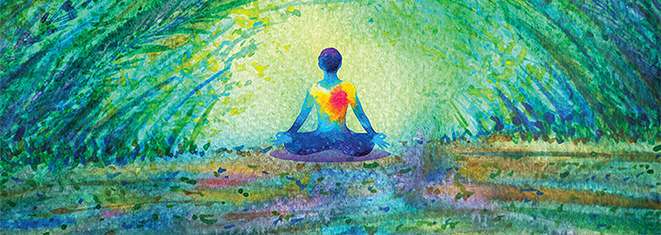PRESSURE: Tips to help reframe how we perceive stress and shift our response to build resilience and support well-being…
By Michael R Malone
Striding to the podium, heart pounding, hyper-aware, about to give that commencement address in front of a packed room, are you “energised” and “excited,” ready to meet the challenge? Or are you “nervous” and “anxious,” wilting under the pressure?
Stress is the body and brain’s response to change, challenge, or demand. It’s inevitable, and everyone experiences it. Though not in the same way.
“Stress can be regarded as a matter-of-fact statement of a pressure or tension being exerted on an object. In this respect, the term is descriptive and neither positive nor negative,” explains Scott Rogers, a University of Miami School of Law professor and long-time advocate for mindfulness practice.
Tea, coffee, cortisol, the psychic pressure of a looming deadline, and trying to find where a puzzle piece belongs, can all be viewed as stressors, he adds.
Given this neutrality, psychologists use the Yerkes-Dodson Law to plot the relationship between stress and performance, Rogers notes. The plot depicts an inverted U such that with little stress, performance is low while as stress grows, performance improves to a point where it is optimal. But too much stress becomes detrimental to performance.
“The optimal state emerges when we have the capacity to meet the stressor. Stress that is useful is known as ‘eustress,’ whereas the stress that pushes the envelope is known as distress,” Rogers says. “Finding the sweet spot at the top of the inverted U can be very satisfying, and mindfulness practice—and becoming more mindfully aware—can help us course correct throughout the day as we begin to slip down either side. This is due to our becoming adept at noticing the tell-tale signs of overwhelm as it begins to kick in.”
Since 1992, April has been recognised as Stress Awareness Month, an intent to bring attention to the causes and cures for our modern-day stress epidemic.
Cognitive Behavioural Therapy (CBT) and Coping Skills Training can be counted among the cures that strengthen resiliency and increase our efficiency in managing stress, according to Michael Antoni, professor and director of the Health Psychology Division in the Department of Psychology.
“One of the most widely accepted and empirically supported methods for changing the ways people interpret challenges is through CBT and specifically, techniques referred to as ‘cognitive restructuring’ where we teach people to entertain alternative interpretations of stressors/challenges to be less threatening, less uncertain, etc. by addressing the extremeness and rigidity of some of their stress appraisals,” Antoni explains.
CBT, conducted in combination with Coping Skills Training, involves having them call upon their arsenal of coping strategies that can be applied to the challenge, but with an eye toward efficient use of energies. Facilitators help differentiate elements of stress that are, and may remain, less controllable versus those that are actually more controllable, Antoni explains.
People learn to “match” more action-oriented coping responses (e.g., making plans, seeking information) to the controllable elements, and use more emotion-focused coping responses (e.g., relaxation, pleasurable activities, seeking social support) to deal with the uncontrollable elements. Together these cognitive-behavioural techniques may greatly increase the efficiency with which one manages stressors; helps to avoid burnout, hopelessness, and frustration; and can provide greater opportunities for self-mastery and gaining helpful social support.
Mindfulness training can help us cultivate greater present moment awareness so that we might perceive things more clearly, suggests Rogers, founder and director of the Mindfulness in Law Programme, UMindfulness, and author of several books on the topic.
“There are stressors in life that bring about responses, mentally and physically, that can be helpful to meeting the challenge,” he said. “So too, we are all susceptible to over-reacting to a challenge when we misperceive what is at stake.
The more clearly we see what is actually taking place (e.g., that thoughts forecasting gloom and doom over a change in job or a relationship are just thoughts—not facts—and worth further investigation; that a person yelling is, in fact, sad or scared), the better we size things up and our expectations and assessments are better balanced and more in alignment with reality.”
Most mindfulness training programs teach meditative practice that direct attention in ways that improve our ability to notice the emerging, changing, and dissipating of thoughts and feelings arising in the mind, and of physical sensations arising in the body.
“As these capacities develop with practice (and experience) we relate to our thoughts, feelings, and sensations differently,” Rogers points out. “We notice them arising sooner and are less likely to resist. We can become more resilient because we see things more clearly and are less likely to get swept away by assumptions, preconceptions, and biases (largely mental activity) and by moments of physiological distress and agitation. Hence, we become steadier and less reactive.”
If stress—our response to change, challenge, and demand—is relatively neutral, what are some of the factors that determine our varied responses?
When we sense a stimulus (through our eyes, ears, nose and other sensory organs) our cerebral cortex interprets the meaning of these through a perceptual process—whether they indicate pleasure, pain, danger, etc.—and signals other brain regions to organise a response, which can range from approach to avoidance to mounting some sort of defensive manoeuver, according to Antoni.
When we interpret that a stimulus or challenge outweighs our means for easily responding then these cortical regions may signal subcortical “stress response centres” involving the hypothalamus and other parts of our “limbic” system and the brainstem, he explained. These cortical “decisions” may depend on the degree of certainty that we have about the nature and impact of the stimuli and our cognitive, behavioural, and social “resources” for responding.
These brain changes can signal neuroendocrine stress hormones in ways that affect peripheral physiology through interactions with cells and tissues that contribute to physical health and disease.
“One could argue that a lifetime of learning, a set of rich and memorable experiences, and the development of wisdom all comes from a series of encounters with challenges that we handle and grow from. These may involve acute stress episodes,” says Antoni, in noting some of the more severe consequences associated with acute and chronic stress.
“Short-term stress—and our successful resolution of it—may also bring about positive psychological states such as positive mood, and a sense of self-efficacy or mastery,” Antoni points out.






